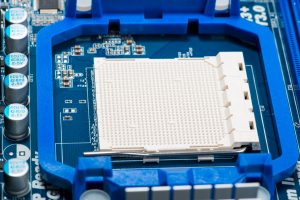
#3 and Final Post in a Series: What You Need To Know About Smart Manufacturing
So far in this series, we’ve taken a pretty broad look at the trend toward smart manufacturing. In my initial post I gave a general introduction of the concept and how smart manufacturing offers a new level of manufacturing efficiency. On Tuesday, I discussed the financial implications of committing to the smart manufacturing, including both the real and the perceived expense involved, and what the investment can do for your bottom line profitability.
Today, in my final post in this series, I’d like to look a bit deeper into what really happens when a manufacturing facility becomes “smart.” When machines “talk to each other” what does that really mean, and what empowers them to do it?
Internet of Things Is THE Thing
When you look closely at what “teaches” those machines to talk, you’ll find that this new capability is powered largely by IoT – the Internet of Things. You may remember I discussed exactly what the Internet of Things is in a recent series, as well. New and retrofitted equipment features connectivity technologies that link directly to the internet. Sensors embedded in the equipment at critical points throughout the process deliver constant real-time information to the cloud, where this “Big Data” is stored. Then the software that comprises the system’s intelligence can analyze that data and make it actionable, using it to correct and/or refine the manufacturing process on the fly.
In short, that means productivity is maximized not just periodically, whenever a human being notices something that needs adjustment, but instantly and constantly– when the machine self-corrects based on more (and more sophisticated) input variables than any human could manage.
Visibility A Key To Profitability
In any manufacturing process, the accurate tracking of physical assets is a necessity. But that can be overwhelming, as those assets include raw materials, spare and component parts, finished products, shipments awaiting delivery, production equipment. process materials and more.
Up until very recently, the most accurate tracking of those assets was at the level of “batch” or “shipment” information. That way, you can tell loosely when a load of something arrived or departed, and follow progress through crude “batch numbers” accompanying the shipment.
This may be good enough for keeping a simple eye on the manufacturing process, the supply chain that feeds it, and the orders that leave a facility. And it provides clarity and a quicker research mechanism when there is a product problem and there is a need is to quickly identify the date, time and location of an item’s manufacture.
But through smart manufacturing and the Internet of Things, assets are now able, in effect, to have a digital identity that communicates their location in real time. This makes every physical asset “visible’ at every moment at every stage of the process, from early in the supply chain through production and delivery. This allows for an unprecedented level of control and a previously unachievable level of ability to know the status of resources, inventory, parts and process materials and finished products.
Making A Measurable Difference
A field survey conducted by SCM World demonstrates the confidence manufacturers have in the benefits smart manufacturing can deliver. When asked to quantify the impact they would expect smart manufacturing to have on several key manufacturing metrics, they envisioned:
- The “defect rate” – an indicator of quality – to be cut nearly in half, from 4.9 percent to 2.5 percent.
- The incidence of “unplanned downtime” (as a percentage of uptime) to be similarly slashed, from 11 percent to 5.8 percent.
- Overall equipment effectiveness to improve by more than 16 percent.
If these projections prove true, then smart manufacturing powered by the Internet of Things is clearly the wave of an increasingly profitable future.
Next time, I’ll look at the security issues that may be raised by this new flood of data constantly being broadcast by more and more components in the manufacturing process. Is it a competitive issue? Does the dramatic process improvement it seeks to provide come at a cost in maintaining confidentiality and proprietary advantages?
If you have any comments on our discussions of smart manufacturing so far, I’d like to hear your thoughts in the comments or feel free to just give me a call. And keep reading and learning about the future of manufacturing. I believe we need to arm ourselves with as much knowledge as possible in order to understand smart manufacturing, and to implement it in such a way as to both build and protect our businesses.


